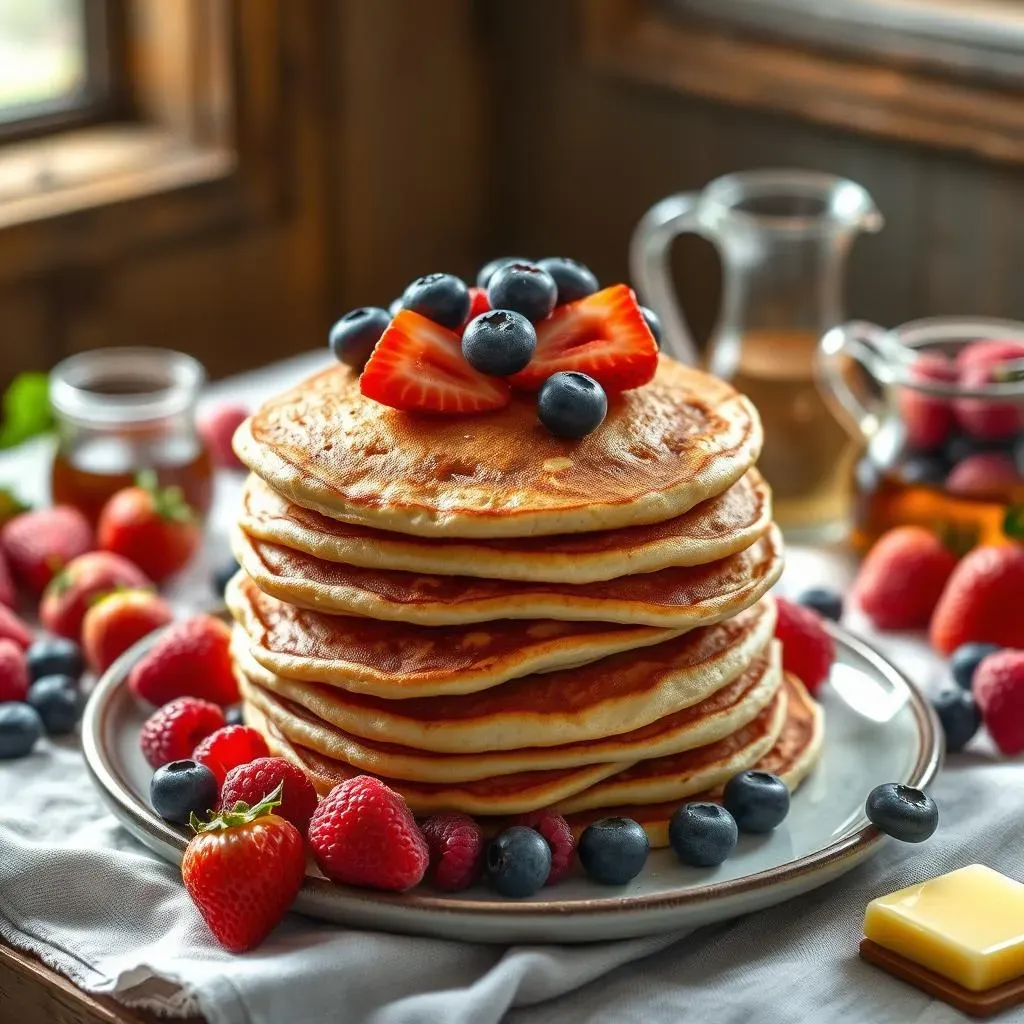Table of Contents
Ever dream of fluffy, golden pancakes packed with juicy berries, but thought gluten was a no-go? Well, dream no more! This isn't just another recipe; it's your passport to pancake paradise, completely gluten-free and bursting with flavor. We're tackling the art of the perfect gluten-free pancake, focusing on how to achieve that light, airy texture we all crave. Forget those sad, flat disks of the past; we're going big and bold. Our journey starts with understanding the basics of gluten-free baking, then moves into crafting the ideal batter. We'll explore a variety of berry options, from sweet blueberries to tangy raspberries, and how to incorporate them for maximum deliciousness. Whether you're a seasoned gluten-free pro or just starting out, this guide to a killer gluten-free pancake recipe with berries will have you flipping like a pro in no time. Get ready to transform your breakfast game.
Understanding GlutenFree Baking
Understanding GlutenFree Baking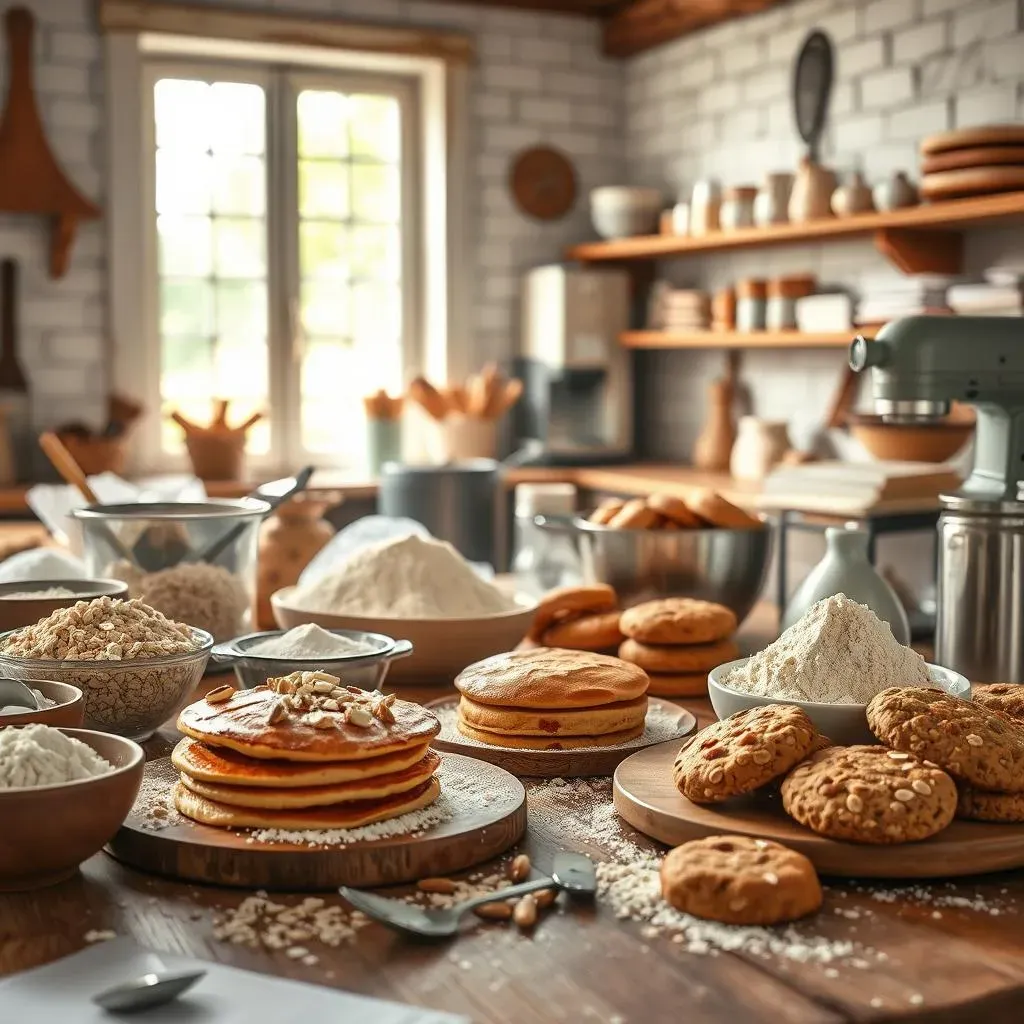
What Makes Gluten-Free Different?
Okay, so you're diving into gluten-free, huh? It's like entering a whole new world of baking. The big difference? We're ditching gluten, that protein found in wheat, barley, and rye. It's what gives traditional baked goods their stretchy, chewy texture. Think of it like the glue that holds everything together. Without it, things can get a bit crumbly. But don't worry, it's not a baking apocalypse! We just have to be a bit smarter about how we mix our ingredients.
When we talk about gluten-free baking, it’s like switching from a familiar dance to learning a new one. You can't just swap out wheat flour for any old gluten-free mix and expect the same results. Gluten-free flours behave differently; they don’t have that same binding power. This means we need to find other ways to get our pancakes to hold together and still be fluffy. It's all about understanding the properties of each ingredient and how they work together. For some, it’s not just a trend, it’s a necessity, like for those with celiac disease. That's why a recipe like best gluten-free pancakes is so important.
Gluten-Free Baking | Traditional Baking |
|---|---|
No gluten | Contains gluten |
Requires binders | Gluten acts as binder |
Different flour behaviors | Consistent flour behaviors |
Common Gluten-Free Flours
Alright, so we've banished gluten; now what? The good news is there's a whole universe of gluten-free flours out there, each with its own personality. Almond flour, for instance, brings a lovely nutty flavor and a slightly denser texture. It’s great, but it can also make things a little heavy if you use too much. Then you have rice flour, which is more neutral and lighter, often used in blends. Oat flour adds a bit of chewiness, and is a great option, but make sure it's certified gluten-free to be safe. And let's not forget coconut flour; it's super absorbent and needs a lot of moisture, so it's a bit of a diva to work with.
Getting to know these flours is crucial, and it’s not a one-size-fits-all situation. A recipe using almond flour might not work the same if you swap it for coconut flour, so pay attention! It's like having a team of players, each with different skills. You need to know when to use them. Experimenting with different flours is part of the fun! If you're looking for some options, check out this guide on using a blend of flours. It’s all about finding the right balance for your perfect pancake.
- Almond flour: Nutty flavor, dense
- Rice flour: Light, neutral
- Oat flour: Chewy texture
- Coconut flour: Highly absorbent
Mastering the Basic GlutenFree Pancake
Mastering the Basic GlutenFree Pancake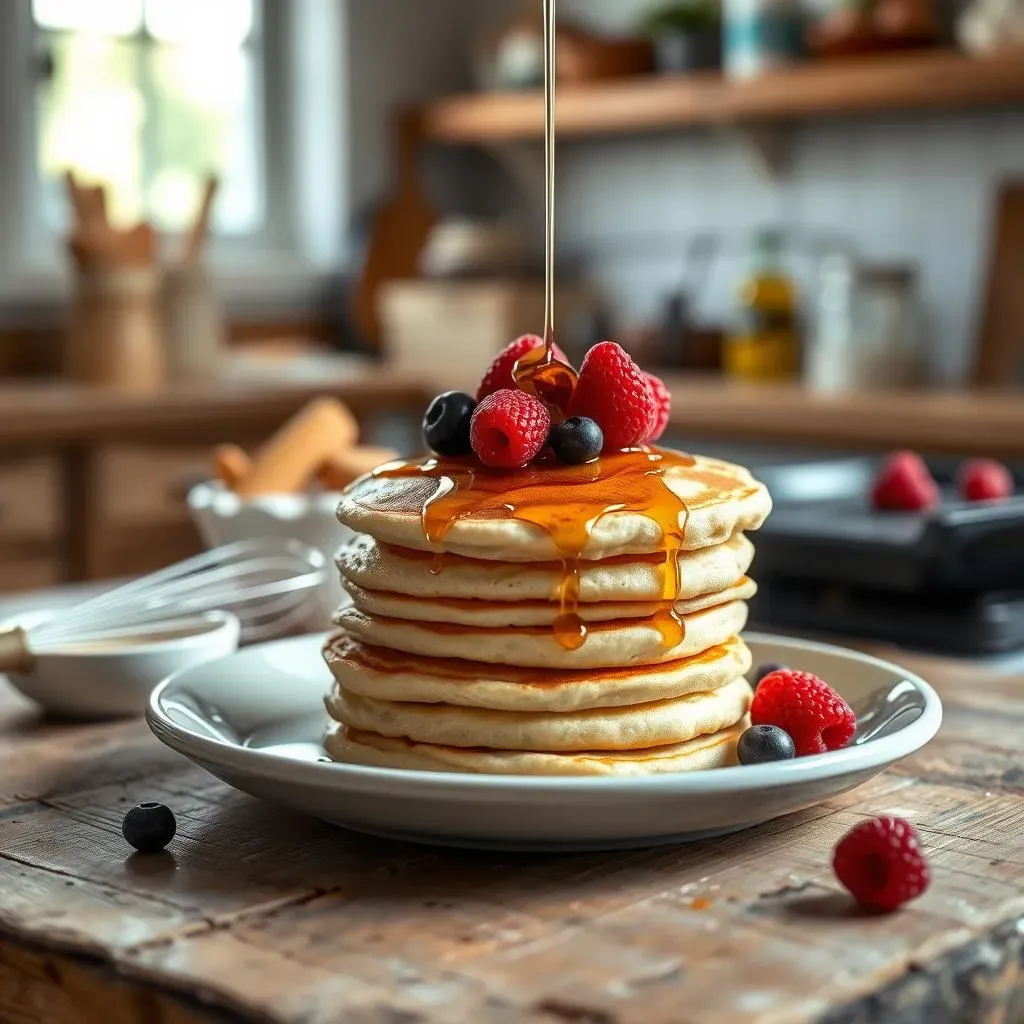
Essential Ingredients
Okay, let's talk about the must-haves for a great gluten-free pancake. First, you’ll need a good gluten-free flour blend. Don’t just grab any bag; look for one that’s specifically designed for baking, not just a single flour. You’ll also need a binder, like xanthan gum or psyllium husk, to give your pancakes some structure. Baking powder is a must for that fluffy lift, and a pinch of salt enhances the flavors. Don't forget the wet ingredients: an egg (or a flax egg for vegan options), some milk (dairy or non-dairy), a touch of oil or melted butter, and a splash of vanilla extract for warmth. These are your building blocks; get them right, and you're already halfway there. If you are looking for a guide about vegan options you can read this dairy-free pancake recipe.
The quality of your ingredients really makes a difference. Fresh baking powder will give you a better rise, and using room-temperature ingredients will help everything mix together more smoothly. It's like building a house; you wouldn't use flimsy wood, right? So, get the best you can. I’ve found that using a good quality oil, like melted coconut oil, can add a slight richness, but don’t go overboard. Think about it, it’s the base of your breakfast masterpiece, so treat it well. And if you're thinking about skipping the vanilla, don't. It's like that secret ingredient that makes everything taste just a little bit better.
Ingredient | Purpose |
|---|---|
Gluten-Free Flour Blend | Base of the pancake |
Binder (Xanthan Gum or Psyllium Husk) | Provides structure |
Baking Powder | Leavening agent for fluffiness |
Salt | Enhances flavor |
Egg or Flax Egg | Adds moisture and binds |
Milk | Adds moisture |
Oil or Melted Butter | Adds richness |
Vanilla Extract | Adds flavor |
Step-by-Step Guide
Now, let's get into the nitty-gritty. First, whisk together all your dry ingredients in a bowl: flour, binder, baking powder, and salt. Give it a good mix to make sure everything is evenly distributed. Then, in a separate bowl, combine your wet ingredients: egg (or flax egg), milk, oil, and vanilla extract. Whisk them together until they're well combined. Now, here’s the key: gently pour the wet ingredients into the dry ingredients. Mix until just combined. Don’t overmix, or your pancakes will be tough. It’s okay if there are a few lumps; they'll disappear as the batter rests. I usually let my batter sit for about 5-10 minutes to let the flour absorb the moisture. If you are looking for a quick recipe, check out this quick breakfast pancake recipe.
Next, heat a lightly oiled griddle or frying pan over medium heat. Once it’s hot, pour about ¼ cup of batter onto the hot surface for each pancake. Cook for about 2-3 minutes per side, or until golden brown and cooked through. You’ll know it’s time to flip when you see bubbles forming on the surface and the edges start to look set. Use a spatula to gently flip each pancake and cook for another 1-2 minutes. And there you have it – your basic gluten-free pancake, ready for some berry love. It is like a dance, you just have to follow the steps and you will be flipping out amazing pancakes in no time. If you are still having issue with the process, read this troubleshooting guide.
- Whisk dry ingredients together.
- Combine wet ingredients in a separate bowl.
- Pour wet into dry and mix until just combined.
- Let batter rest for 5-10 minutes.
- Cook on a hot, lightly oiled griddle.
- Flip when bubbles form.
Tips for Perfect Batter
Alright, let's talk about some pro tips to make sure your batter is top-notch. First off, don't overmix! It's the number one mistake people make. Overmixing develops the gluten (even though we're using gluten-free flour, it can still create a tough texture), making your pancakes dense and rubbery. Mix until just combined; a few lumps are totally fine. Another tip? Don't skip the resting time. Letting the batter sit allows the flour to fully absorb the liquids, resulting in a lighter, fluffier pancake. Think of it as giving your batter a little spa day before it hits the griddle. And if your batter seems too thick, add a tablespoon of milk at a time until you reach the right consistency. It should be pourable, but not too runny. For a different flavor profile, you can read this banana pancake recipe.
Temperature is also a big deal. Make sure your griddle or pan is heated to medium heat. If it's too hot, your pancakes will burn on the outside before they cook through on the inside. If it's not hot enough, they'll be flat and sad. You’re aiming for that perfect golden brown. And remember, every gluten-free flour blend is a little different, so you might need to adjust the liquid slightly based on the specific brand you’re using. It's like learning to drive a different car, you need to get a feel for it. Also, using a cookie scoop to measure your batter ensures consistent pancake sizes. Little things make a huge difference, right?
Berry Variations and Flavor Combinations
Berry Variations and Flavor Combinations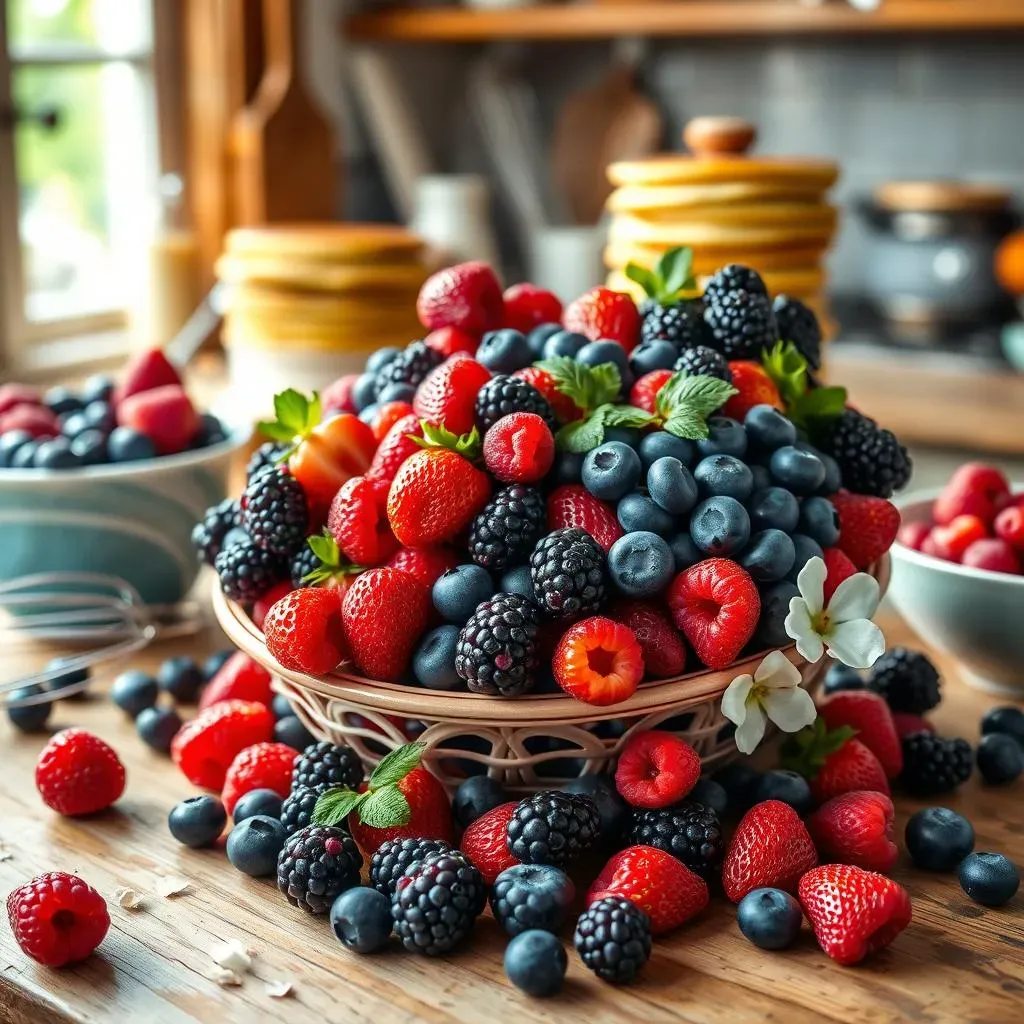
Fresh vs. Frozen Berries
Okay, so you've got your basic pancake down, now it's time to get fruity! The big question: fresh or frozen berries? Both work great, but they have different quirks. Fresh berries are fantastic when they're in season; their flavor is just unbeatable, and they hold their shape beautifully in your pancakes. But, they can be pricey out of season, and they can sometimes bleed their juices into the batter. Frozen berries, on the other hand, are a freezer staple. They're usually cheaper, available year-round, and they don't require any prep. The only thing is that they tend to release more moisture as they cook, so you may need to adjust your batter slightly, they also may not hold their shape as well as fresh. I love to use a mix of both, fresh for topping and frozen for baking right in. If you are looking for a recipe that uses berries, read this pancake recipe with berries.
When using frozen berries, it’s best not to thaw them first. Just toss them in frozen and they'll cook perfectly in the batter. This will prevent them from turning mushy and bleeding too much color. Think of it like adding ice cubes to a drink; they keep it cool without watering it down too much. And if you’re using fresh berries, gently fold them into the batter right before you cook the pancakes to keep them from breaking up. It’s all about treating those berries with care. If you want to find some more tips about baking, read this troubleshooting guide. It's all about finding what works best for you, so don't be afraid to experiment.
Berry Type | Fresh | Frozen |
|---|---|---|
Flavor | Best when in season | Consistent flavor |
Cost | Can be pricey | Generally cheaper |
Shape | Holds shape well | May lose shape |
Moisture | Less moisture | More moisture |
Berry Types and Pairings
Now, let's talk about the fun part – choosing your berries! Blueberries are classic for a reason; they’re sweet, juicy, and they hold their shape well. Raspberries bring a lovely tartness, and they pair beautifully with a touch of lemon zest in the batter. Strawberries are sweet and a bit softer, they can be wonderful when sliced and layered on top of the pancakes. Blackberries have a slightly earthy flavor and they can make a beautiful compote. And don't forget about mixed berries; they’re like a party in your mouth! Each berry brings something unique to the table. When pairing berries, think about what flavors complement each other. For example, blueberries and lemon, raspberries and a hint of vanilla, or strawberries with a touch of balsamic glaze. It is like creating a symphony of flavors.
The key is to choose berries that you enjoy. Don't feel pressured to use a specific type just because a recipe suggests it. It's your pancake adventure, so make it your own! If you are looking for a recipe that you can use with toddlers, check out this gluten-free pancake recipe for toddlers. Also, consider the season; using seasonal berries will always give you the best flavor. And remember, you can always mix and match. One of my favorite combos is a mix of blueberries and raspberries, it gives you the sweet and tart combo. It's like having the best of both worlds!
- Blueberries: Sweet and classic.
- Raspberries: Tart and tangy.
- Strawberries: Sweet and soft.
- Blackberries: Earthy and rich.
- Mixed Berries: A delightful combo.
Adding Berry Compotes and Sauces
Want to take your berry game to the next level? Let’s talk about berry compotes and sauces. A simple berry compote can transform your pancakes from good to amazing. It’s super easy to make: just simmer your berries with a bit of sugar (or honey, if you prefer) and a splash of water or lemon juice until they break down into a thick, luscious sauce. You can add a pinch of cinnamon or a dash of vanilla for extra depth of flavor. A warm berry compote over your pancakes is like a warm hug on a chilly morning. It’s like painting your breakfast with a rich, vibrant color.
If you are feeling fancy, you can also make a berry coulis, which is a smoother, finer version of a compote. Just blend your cooked berries until smooth and strain it through a fine-mesh sieve. It is perfect for those who prefer a smooth texture. And don’t forget about simple berry syrups, just mix berry juice with a bit of sugar and reduce it over low heat until it thickens. It’s like having a gourmet dessert for breakfast. If you are looking for a recipe that uses honey, read this pancake recipe with honey. These extra touches can really elevate your gluten-free pancake experience. It is like adding the perfect finishing touches to a masterpiece.
Troubleshooting and Extra Tips
Troubleshooting and Extra Tips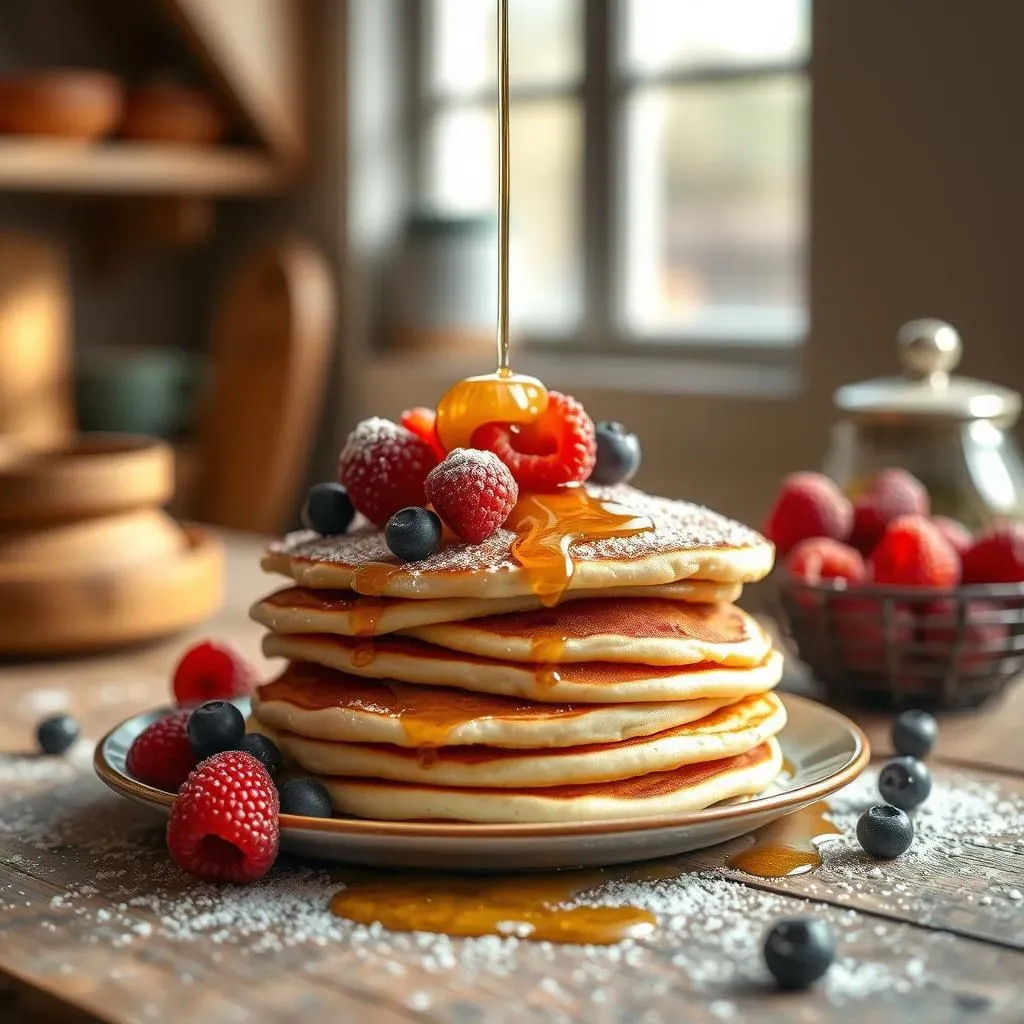
Common Mistakes
Okay, let's be real, even the best of us have pancake fails. One of the biggest culprits? Overmixing the batter. I know I've said it before, but it's *that* important. Overmixing develops the gluten (or in this case, the proteins in the gluten-free flours), and you end up with tough, chewy pancakes instead of fluffy clouds. Another common mishap is using the wrong heat. Too high, and your pancakes burn on the outside before they cook through; too low, and they're just sad, pale, and flat. Also, make sure your baking powder is fresh. Old baking powder will lose its oomph, and your pancakes will be dense and flat. It's like trying to inflate a balloon with a hole in it; it's not going to work.
Also, I see people using the wrong flour. Not all gluten-free flours are created equal. Using a single type of flour, like almond or coconut, can sometimes lead to less than ideal results. That’s why I recommend using a good gluten-free blend, which has a mix of flours and starches for better texture. And don't be afraid to adjust the liquid. If your batter is too thick, add a tablespoon of milk at a time until it reaches the right consistency. If it’s too thin, add a tablespoon of flour. It’s like tuning an instrument; you have to tweak it until it sounds just right. If you are having issues, check out this guide about common issues. Remember, practice makes perfect, so don't get discouraged by a few less-than-perfect pancakes.
- Overmixing the batter.
- Using the wrong heat.
- Old baking powder.
- Using the wrong flour.
- Incorrect liquid consistency.
Adjusting Sweetness and Texture
Now, let's talk about customizing your pancakes. If you prefer a sweeter pancake, you can add a tablespoon of sugar or honey to the batter. But don’t go overboard; too much sugar can make your pancakes too dense. I like to use a touch of maple syrup to sweeten my pancakes because it adds a nice flavor. If you are looking for a recipe with honey, check out this honey pancake recipe. And if you are looking for a recipe without sugar, you can reduce the amount or omit it completely. For a richer flavor, you can add some spices, like cinnamon or nutmeg. It’s like adding your own artistic touch to the recipe. It's your pancake, so make it the way you like it.
For a lighter texture, you can try using a bit of sparkling water in the batter, it adds a bit of extra lift. You can also add a tablespoon of apple cider vinegar to the batter, this helps to create a more tender crumb. And if you want a denser pancake, try adding a bit of mashed banana or some pureed pumpkin. It’s like experimenting in a science lab, seeing what works best for your taste. If you are looking for a recipe that uses banana, check out this banana pancake recipe. Also, don’t be afraid to experiment with different types of flours to see what textures you prefer. It’s all about finding the perfect balance.
Adjustment | Effect |
|---|---|
Add Sugar or Honey | Increases sweetness |
Add Spices | Adds flavor |
Sparkling Water | Lighter texture |
Apple Cider Vinegar | Tender crumb |
Mashed Banana | Denser texture |
Serving and Storage Ideas
Alright, your pancakes are cooked and smelling amazing, now what? Let’s talk serving and storage. For serving, think beyond just syrup. A dollop of yogurt or whipped cream is always a good idea. Fresh fruit, like sliced strawberries or a mix of berries, will add a burst of freshness. And don’t forget a sprinkle of nuts or seeds for some added crunch. If you want a little extra indulgence, a drizzle of chocolate sauce or a dusting of powdered sugar is always a win. It’s like creating a masterpiece on a plate, so make it look as good as it tastes. If you are looking for a recipe with chocolate, check out this chocolate chip pancake recipe.
If you have leftovers, don’t worry, you can totally save them for later. Let the pancakes cool completely, and then store them in an airtight container in the fridge for up to three days. You can also freeze them for up to a month. To reheat, you can pop them in the toaster, microwave, or a skillet. They won’t be quite as fluffy as when they were fresh, but they’ll still be delicious. It’s like having a little breakfast treat ready to go whenever you need it. If you are looking for a recipe that you can make for a weekend brunch, check out this weekend brunch recipe. And there you have it, everything you need to make and enjoy the best gluten-free pancakes with berries!
Wrapping Up Your Berry-licious Breakfast
So, there you have it—your complete guide to mastering the art of the gluten-free pancake with berries. You've learned the ins and outs of gluten-free flours, how to create a perfectly balanced batter, and ways to make those berries shine. Remember, cooking is all about experimenting, so don't be afraid to tweak the recipe to your taste. Maybe you’ll add a dash of lemon zest or try a mix of different berries. The key is to have fun and enjoy the process, and most importantly, those delicious, fluffy pancakes. Whether it's a weekend brunch or a quick weekday treat, these gluten-free delights are sure to bring a smile to your face. Now go ahead and make some magic in the kitchen!
